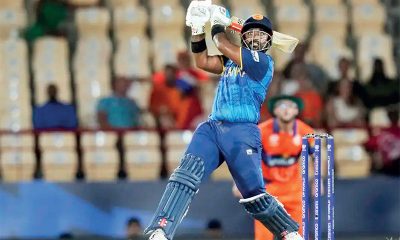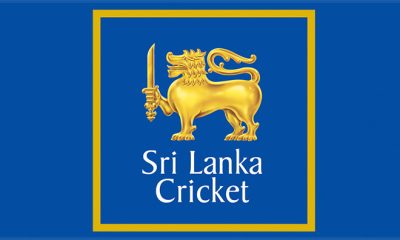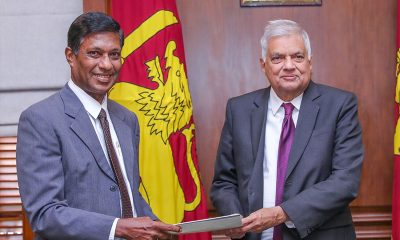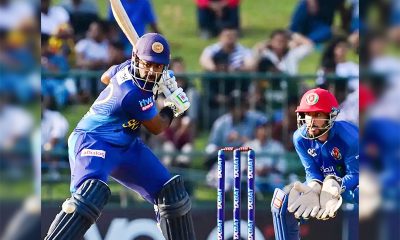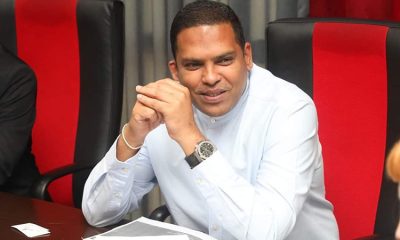News
No decision on 2024 Under-19 World Cup yet as SLC suspension row rumbles on
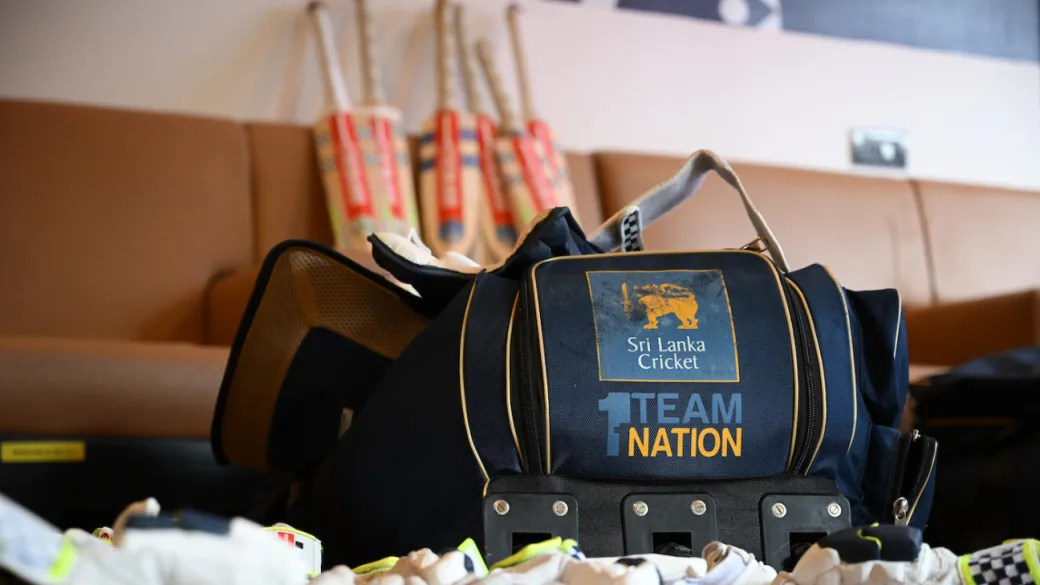
Sri Lanka Cricket (SLC) president Shammi Silva has warned that the country could lose out on hosting the men’s Under-19 World Cup in January and February if the ICC’s suspension of SLC was not lifted. He also said the ICC wanted to suspend Sri Lanka back in July, but he prevented it.
However, ESPNcricinfo understands the ICC has not yet made a decision on the U-19 World Cup and will discuss the hosting of that tournament only at the next board meeting on November 21. It is learned that there was also no discussion within the ICC of suspending SLC in July.
According to Silva, ICC deputy chairman Imran Khwaja had taken special interest in potential political interference in Sri Lanka. “About five months ago, the ICC came here when there was news of political interference, and held an inquiry,” Silva said. “Mr. Imran Khwaja met the minister and the president (of Sri Lanka), and told them the ICC would be taking it seriously if you don’t properly control this. This [the suspension] is not something that happening in one or two days.
According to information that ESPNcricinfo has, it is only after SLC complained to the ICC about political interference in November 2022 that Khwaja travelled to Sri Lanka on a fact-finding mission. It is understood the ICC did not find prima facie evidence of direct interference at the time.
The background to this issue is that SLC and the country’s sports minister Roshan Ranasinghe have been in conflict over the past year, with Ranasinghe making accusations of corruption and mismanagement in the cricket board, while Silva and SLC accuse him of meddling with cricket.
Both Silva and Ranasinghe held media interactions separately on Saturday afternoon; both parties sometimes making personal insults. In Silva’s press conference at SLC headquarters, he stressed that both the ICC and SLC seek assurance from the highest level of Sri Lankan politics – the president of the country, essentially – that there would be no further political interference in the running of cricket in Sri Lanka.
Though Silva and his elected board are currently at the helm at SLC, their place remains precarious, It is only the result of a 14-day stay order delivered by Sri Lanka’s courts, which reversed Ranasinghe’s appointment of an interim committee led by Arjuna Ranatunga on Monday to run SLC.
Ranasinghe, meanwhile, outlined the sports ministry’s next steps as it attempts to have SLC’s suspension lifted by the ICC. He said the ministry would approach the ICC’s dispute resolution committee first, which is a body within the ICC that reviews appeals from boards on membership matters. If that process fails, Ranasinghe said, the ministry would look at pursuing a case at the Court of Arbitration for Sport in Lausanne, Switzerland.
On the home front, the ministry will seek a jugdement from Sri Lanka’s own courts that reinstall the minister’s Ranatunga-led interim committee.
It is Silva who is understood to have sought SLC’s suspension, as a means of putting pressure on the Sri Lankan government. When asked directly about this at the press conference, he said: “I’ve already said this was something that was going to happen for five months. If I can pull strings like that, I’ve got to be an impressive person.
Earlier in the day, SLC’s vice president Ravin Wickramaratne told ESPNcricinfo: “As a full member, it is our right to go to the ICC.”
(Cricinfo)
Latest News
Sri Lanka Coast Guard commence clearing oil spill in Maduru Oya Reservoir

The Sri Lanka Coast Guard launched an operation to clear the oil spill caused by the crash of a Sri Lanka Air Force Bell 212 helicopter into the Maduru Oya Reservoir, during a training flight on 09 May 2025.
The efforts to clear the oil spill are ongoing and will continue today, 10 May.
News
Maduru Oya helicopter crash: Army, Air Force launch probes

Bell 212 accident during passing out parade kills six military personnel, injures six others
A Bell 212 helicopter, belonging to the Sri Lanka Air Force (SLAF), crashed into the Maduru Oya reservoir yesterday morning, killing six forces personnel and injuring six others. The helicopter was on a routine mission in support of a Special Forces passing-out parade when it encountered technical difficulties and attempted an emergency landing.
The crash occurred at approximately 8:17 a.m., after the helicopter took off from the SLAF Base Hingurakgoda, at 6:47 a.m., and picked up Army personnel in Maduru Oya around 7:08 a.m. According to the SLAF, the aircraft was conducting a heli-rappelling drill as part of a military demonstration when it suffered a technical malfunction shortly after takeoff.
The aircraft was carrying 12 individuals—six from the Army and six from the Air Force, including two pilots. Initial rescue efforts led to all passengers being retrieved alive and transported to the Aralaganwila Regional Hospital, with eight later transferred to the Polonnaruwa General Hospital due to the severity of their injuries.
Despite emergency medical care, six of the personnel succumbed to their injuries—four Army Special Forces soldiers and two Air Force members. Among the deceased were helicopter gunmen and elite Special Forces troops.
In the wake of the tragedy, both the Army and Air Force have launched separate investigations to determine the cause of the crash. Air Force Commander Air Marshal Bandu Edirisinghe has appointed a nine-member inquiry committee, while Army Commander Lieutenant General Lasantha Rodrigo confirmed that expert teams have been dispatched to the crash site to gather evidence.
Air Force spokesperson Group Captain Eranda Geeganage said the crash occurred during a drill demonstration at the training school and that the exact cause of the accident remains unknown at this time.The remaining six injured personnel are still receiving treatment, with their conditions being closely monitored.
By Norman Palihawadane
News
Cardinal Prevost becomes Pope Leo XIV

Nearly half a century has passed since the Catholic Church last had an Italian Pope. In the hallowed corridors of the Vatican, as the Conclave began deliberations to elect a successor to Pope Francis, several Italian names were whispered with increasing frequency. Chief among them was Cardinal Pietro Parolin, the Vatican’s Secretary of State, a seasoned diplomat, and well-known among the electors. Others, like Cardinals Pierbattista Pizzaballa and Matteo Zuppi, also had their share of admirers.
Yet, when the white smoke rose above the Sistine Chapel, it was not an Italian who emerged. Instead, the Cardinals turned to an unheralded American – Robert Francis Prevost, a canon law professor and lifelong missionary – electing him as successor to St. Peter. He has taken the name Pope Leo XIV.
Though born in the United States, Pope Leo’s spiritual and pastoral heart lies in Peru, where he spent much of his life in missionary service. His elevation comes as a surprise to many as he had been made a Cardinal just two years earlier, appointed by Pope Francis himself. A relative newcomer in the College of Cardinals, he was seen by many as a wildcard – yet perhaps that’s exactly what the Church needed.
At 69, Pope Leo is poised for what could be a lengthy pontificate – time enough, perhaps, to carry forward the reforms initiated by his predecessor. It’s no secret that Pope Francis saw in him a leader fit for the challenges of global Catholicism. When Prevost returned from Peru to head the Augustinian Order – a role he held for 12 years – it was Francis who sent him back across continents, appointing him Bishop of Chiclayo and entrusting him with pastoral care once more in Peru.
Those close to the new Pontiff describe him as deeply spiritual, a steady hand, and a bridge-builder, qualities sorely needed in a Church increasingly split between traditionalists and reformists. He is expected to offer a more measured, balanced approach on key issues, fostering dialogue rather than division.
In many ways, this Conclave echoed the dramatic scenes of October 1978, when an unknown outsider from Poland – Karol Wojtyla – was chosen as Pope John Paul II. Like then, the Cardinals have once again looked beyond the obvious front-runners. But, unlike 1978, when it took eight ballots to break the deadlock and settle on a compromise, this time it took just four.
That speed speaks volumes. The Cardinals were not merely settling – they were convinced that here’s the man to take the Church forward. In Cardinal Prevost, they found a shepherd capable of steering the Church through a time of transition, someone who could temper Franciscan reform with pastoral wisdom and unite a divided flock under the banner of faith and humility.
By Rex Clementine
-

 Opinion7 days ago
Opinion7 days agoRemembering Dr. Samuel Mathew: A Heart that Healed Countless Lives
-

 Business5 days ago
Business5 days agoAitken Spence Travels continues its leadership as the only Travelife-Certified DMC in Sri Lanka
-

 Latest News4 days ago
Latest News4 days agoNPP win Maharagama Urban Council
-

 Business5 days ago
Business5 days agoLinearSix and InsureMO® expand partnership
-

 Business3 days ago
Business3 days agoJohn Keells Properties and MullenLowe unveil “Minutes Away”
-

 Features7 days ago
Features7 days agoTrump’s economic missiles are boomeranging
-

 Latest News7 days ago
Latest News7 days agoThe Heat index is likely to increase up to ‘Caution level’ at some places in Eastern, Northern, North-central and North-western provinces and in Monaragala and Hambantota districts.
-

 Business4 days ago
Business4 days agoNDB Bank partners with Bishop’s College to launch NDB Pixel awareness



